DO-IT News March 2018

Volume 26, Issue 2
Below are the articles of the DO-IT News March 2018 newsletter. These articles can also be seen all on one page at the Full Newsletter option.
Director's Digressions: DO-IT Videos
Video presentations are a great way for individuals with disabilities to share their perspectives and teach educators, employers, and other stakeholders how to make their offerings accessible to and usable by people with disabilities. DO-IT makes use of this medium to communicate with a broad audience. Most are available on YouTube, as well as on the DO-IT website.
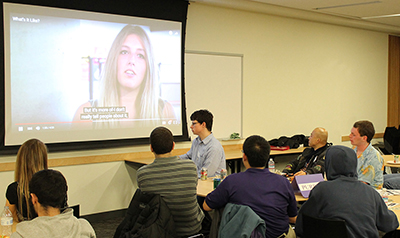
We are currently featuring a collection of short videos that showcase how online courses can be designed to be accessible to everyone. We are currently featuring four titles. Check them out!
- 20 Tips for Instructors about Making Online Learning Courses Accessible
- Making Videos Accessible
- Captions: Improving Access to Postsecondary Education
- Creating Accessible Documents
We encourage all organizations—including disability services, teaching and learning centers, IT support centers, and others who support universal design—to consider sharing these videos and linking to them from their websites. All of our videos can be used freely for educational purposes.
We are also always making new videos. If you have an idea or want to partner on creating a video, please contact us at doit@uw.edu.
Teach Access Paper at SIGCSE
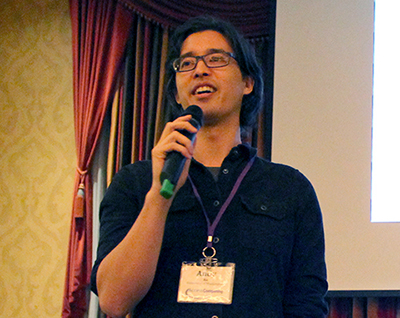
The AccessComputing team conducted a nation-wide survey on teaching accessibility. We reached out to 14,176 computing and information science faculty at all institutions of higher education in the United States, and received 1,857 full responses.
The goal of the survey was to learn who is teaching accessibility, what they are teaching, and what barriers faculty see to teaching about accessibility. Of those who responded, about 20% reported teaching something about accessibility in at least one course; about 50% of the institutions that responded had at least one elective course that taught something about accessibility; and 75 institutions had at least two faculty members teaching accessibility. There were only 17 self-described accessibility experts, spread across 14 institutions.
Of the faculty who responded, those who teach accessibility were twice as likely to be female, twice as likely to view accessibility as part of computer science (CS) curricula, three times as likely to have expertise in accessibility, and about 1.5 times as likely to know someone who has a disability. Even most respondents who do not teach accessibility believed that accessibility should be taught in CS—they just did not believe they had enough expertise and did not know how the topic connected to their specific sub-areas of CS.
AccessComputing and Teach Access are using these results to prepare new materials that can help faculty gain expertise in accessibility and potential links to CS curriculum.
Winter Resume Contest
Crafting a good resume is essential for all job seekers, especially those who are entering the workforce for the first time. Every year AccessComputing and AccessSTEM participants get the chance to engage with staff and get feedback on their resumes. To incentivize participation in this activity, we offer prizes to the resumes we thought were the strongest. We looked at formatting, grammar, content, and how well the resume reflected the student’s success. Below are some common themes that we found as we looked over the submissions.
Overcrowding
Some resumes simply had too much content. Make your resume concise by limiting each job’s duties to three or four bullets, cutting irrelevant positions, and making use of white space so that your resume is easier to read.
Objective statements
If you include an objective statement make it as specific as possible. Consider whether an objective statement adds anything to your resume, or if you could include it in a cover letter.
Skill sections
Depending on the field you are in, consider including a skills section. This could consist of programming languages, software, or other specific skills you wish to highlight. Pay special attention to the skills directly related to the job to which you are applying.
Length
The length of your resume is important to consider. Should it be one page? Two pages? Consider keeping the resume to one full page or two full pages rather than including partial pages. For those with many years of experience, it may be longer. All information you include should have a purpose, not merely “fluff” to make it longer.
Formatting
The best resumes have an organized and consistent flow. Utilize bold and italics to emphasize what is the most important. Use bullets under each job entry to outline your specific duties. We were impressed with the following:
- Including a “conferences, publications, and presentations” section can show off accomplishments outside of the classroom and work.
- Putting technical skills into a side column can prioritize the information employers are looking for.
- Formatting a work experience section uniquely—for example, one of our winning resumes included the job’s “goal, value, and contribution.”
The resume submissions reinforced the amazing academic achievements and skills of the AccessComputing and AccessSTEM team members. Whether it was highlighting their GPAs, internships, scholarships, and publications, or how they’ve entered their careers, we are proud of everyone’s accomplishments.
DO-IT staff are always available to help students revise their resumes and give feedback. University career centers are also a good resource to go to for in-person help.
ABLE Accounts
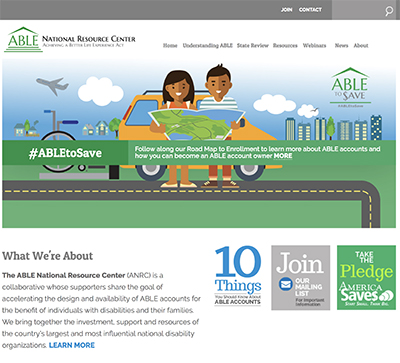
Although Congress passed the Stephen Beck Jr. Achieving a Better Life Experience (ABLE) Act in 2014, there are still many questions surrounding this program as it is established in each state. The ABLE National Resource Center, founded and managed by National Disability Institute, brings together investment, support, and resources from national disability organizations with the goal of providing consistent, reliable information concerning ABLE Accounts.
ABLE Accounts are tax-advantaged savings accounts that allow individuals with disabilities and their families to save money while still receiving public benefits. With a number of recent changes to the ABLE Act, the ABLE National Resource Center is the first place to look for up-to-date information. It offers simple explanations, videos, and webinars to make the information easy to understand. They provide reliable information to learn more about ABLE Accounts. Check out their resource ABLE Accounts: 10 Things You Should Know for a good starting point.
DO-IT thanks 2014 Scholar parent Jim Dunlap for initially bringing this program to our attention.
ABET Recognizes Accessibility
ABET is the accrediting board for college and university programs in the disciplines of applied and natural science, computing, engineering, and engineering technology at the associate, bachelor, and master degree levels. For 2017-2018, ABET added “accessibility” as one of the potential constraints in its definition of “Engineering Design.” This is in recognition that people with disabilities should be considered as users of products and services that are developed by engineers and computer scientists. It also reflects the desire by companies to hire students who have some experience in accessible design.
The ABET definition of Engineering Design now reads as follows: “Engineering design is the process of devising a system, component, or process to meet desired needs and specifications within constraints. It is an iterative, creative, decision-making process in which the basic sciences, mathematics, and engineering sciences are applied to convert resources into solutions. The process involves identifying opportunities, performing analysis and synthesis, generating multiple solutions, evaluating those solutions against requirements, considering risks, and making trade-offs to identify a high quality solution under the given circumstances. For illustrative purposes only, examples of possible constraints include accessibility, aesthetics, constructability, cost, ergonomics, functionality, interoperability, legal considerations, maintainability, manufacturability, policy, regulations, schedule, sustainability, or usability” (our emphasis).
This is just one of the reasons you may want to teach accessibility. See the AccessComputing website for more resources and information on accessibility.
AccessComputing was Active at SIGCSE
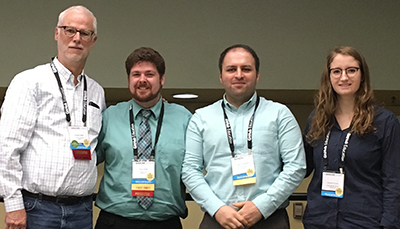
The Association for Computing Machinery’s annual Special Interest Group on Computer Science Education (SIGCSE) conference was held in Baltimore at the end of February. AccessComputing was particularly active this year, hosting the following:
- Inclusive Teaching workshop (Slides)
- Teaching Accessibility workshop (Slides)
- A panel discussion of students with disabilities. Check out: 12 Easy and Important Tricks to Make Your Teaching More Accessible from our student panelist Samsara Counts
- Who Teaches Accessibility?: A Survey of U.S. Computing Faculty (Paper) — Kristen Shinohara (Rochester Institute of Technology), Saba Kawas, Amy J. Ko, Richard Ladner
- A Birds of a Feather discussion on Access to Computing Education for Students with Disabilities
Several AccessComputing and AccessCSforAll partners presented papers at the conference as well:
- A Cross-Case Analysis of Instructional Strategies to Support Participation of K-8 Students with Disabilities in CS for All — Maya Israel (University of Illinois)
- Enhanced Robotics!: Improving Building and Programming Learning Experiences for Students with Visual Impairments — Stephanie Ludi (University of North Texas)
- Teaching Inclusive Thinking to Undergraduate Students in Computing Programs — Stephanie Ludi (University of North Texas)
For a longer recap, check out AccessComputing co-PI Amy J. Ko’s SIGCSE 2018 Trip Report.
Special Olympics 2018 in Seattle
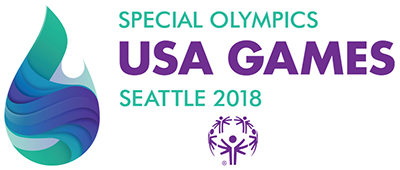
Seattle will host the 50th annual Special Olympics USA Games from July 1-6, 2018. While the University of Washington is set to serve as the primary venue, events will take place across the greater Seattle area including Kenmore Lanes, Seattle University, King County Aquatic Center, and Willows Run Gold Club. More than 3,500 athletes and 1,000 coaches from all 50 states will compete in 16 Olympic-type individual and team sports. With an estimated 10,000 family members, 10,000 volunteers and 50,000 spectators on hand to cheer on the athletes, the Special Olympics USA Games will be the biggest sporting event to hit Seattle in more than 25 years!
The Games will serve as a catalyst for the Welcome Inclusion (WIN) initiative to make King County a regional model of community inclusion through awareness, community, and training. More information can be found here.
The UW residence halls will house thousands of athletes and coaches from across the country. Many of the major campus facilities will serve as the backdrop for the opening ceremony and many of the competitive events.
The UW Combined Fund Drive partnered with Special Olympics Washington this year to raise funds to help over 17,000 Special Olympics athletes from across Washington State.
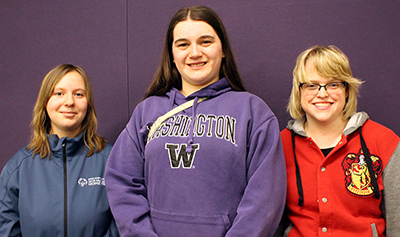
DO-IT Ambassadors Micayla and Brookelyn encourage others to participate in Unified Sports, an inclusive sports program that unites Special Olympics athletes with those without disabilities to compete together. Both athletes started participating in Unified Sports in high school. “[I enjoyed] making new friends and learned how to be more accepting of people who are different than you are.” Brookelyn stated. Both athletes saw it as a way to get involved with sports and meet people outside of her high school.
Micayla especially likes that both people with and without disabilities get a chance to play together. “While it can be competitive, we have a friendly rivalry,” she said. Over the years, her basketball team made it to both district and state level competitions. This summer will be Micayla’s fifth year participating. She is both excited and nervous about the upcoming week-long event.
Brookelyn says her favorite part was the friendly competition. “It teaches you how to work as a team in a very good way and makes it fun.” She said that you quickly learn that it is not about winning or losing, but how you play the game. “It was the greatest time in my life and taught me more about teamwork and to be a better person.”
Another way to check out amazing athletes participating in sports is through the Paralympics, which took place in Pyeongchang, South Korea from March 9-18, 2018, two weeks after the conclusion of the Winter Olympics.
How are Special Olympics and Paralympics different? Special Olympics welcomes all athletes with intellectual disabilities to train and compete in 32 Olympic-type sports. To be eligible to participate in Special Olympics, athletes must have an intellectual disability, a cognitive delay, or a development disability (functional limitations in both general learning and adaptive skills). They may also have a physical disability. In comparison, to compete in the Paralympic Games, athletes must fulfill a specific set of criteria and be classified into specific sports and disability categories. (Find more information on Paralympic classification here.)
For more information on the 2018 Special Olympics USA Games, visit their website and follow on Facebook, Twitter, Instagram, and YouTube.
Apply For The 18th Annual Youth Leadership Forum
The Youth Leadership Forum for Students with Disabilities (YLF) is designed for students with disabilities who want to be leaders in their schools and communities. Students will learn to understand and believe that diversity is the foundation of any successful community. By serving as delegates from their communities, students can cultivate leadership and employment skills.
This year’s forum will take place July 22 – 28, 2018 at The Evergreen State College in Olympia, Washington. Applications are due by June 1. To be eligible, you must be
- an incoming high school junior or senior (as of July 1, 2018),
- a 2018 high school graduate, or
- a students up to age 21 who is receiving transition services from their high school.
About 35-50 students with disabilities will be selected to attend the forum. There is no cost to families for their student to attend.
YLF is a cooperative project of the Governor’s Committee on Disability Issues and Employment, the Division of Vocational Rehabilitation, the Department of Services for the Blind, Camelot Society, Liberty Mutual Insurance, Disability Rights Washington and other organizations and individuals. For more information and an application, contact Elaine Stefanowicz at estefanowicz@esd.wa.gov or (360) 902-9362.
Virtual Career Fairs
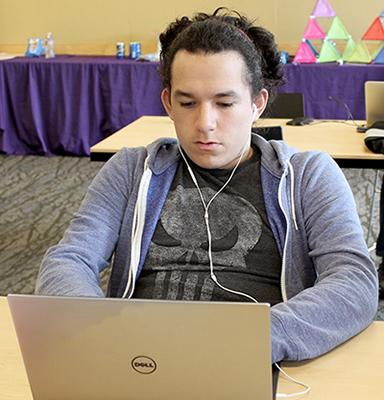
College students often attend career fairs to prepare for graduation and plan their future in the workforce. Many recruiters will set up “virtual job fairs” that take place online rather than in person on a college campus. For students with disabilities, these could possibly be a way to engage with potential employers without needing to be in a crowded event space. But how do they work? Are they beneficial?
Virtual career fairs take place in many different online environments. These could be chat rooms, webinars, webcasts, or other teleconferencing software. There is often a way for job seekers to upload their resumes so that recruiters have access to them.
Here are some tips on feeling successful at a virtual career fair:
- Look for a fair that has a variety of employers present.
- Have your resume ready to upload or reference when needed.
- Prepare questions to ask the recruiters.
- Test your equipment! Technical issues do come up, but try and give yourself extra time to get set up.
- Dress appropriately, especially if there is a video component of the fair.
- If you require a screen reader to access the fair, contact the host in advance to ask if the program is accessible via your technology.
- Companies usually have specific windows of time that they are available to chat with participants—keep track of who you want to talk to and when.
Virtual fairs work for some people but not for everyone. If you are curious, it never hurts to try. Beginning a job search can be overwhelming, but being open to new ideas and experiences will give you the tools to succeed in getting your dream job.
First Job Experiences: Advice From Scholars
First jobs can be difficult and nerve wracking. We asked Scholars the following questions and are sharing their complied experiences on how to quell first job anxieties. Some responses are edited for clarity.
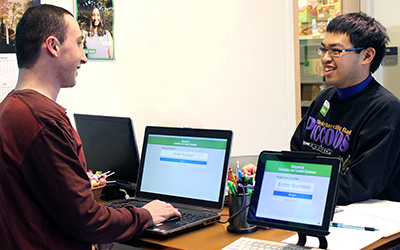
Were you nervous, and why? When did you disclose your disability, if you did? How are some of your accommodations met in the workplace, if you use any? Do you have any other advice you’d offer about finding or starting a first job?
“I haven’t gotten a first job yet, though I’ve done some volunteering and plan on interning this summer. I tried to get an internship last summer—I interviewed with Congressman McDermott’s office, but got rejected. I’m always nervous when doing face-to-face interviews, and the ones I’ve done are no exception. In the past I’ve disclosed my autism on the application form and my writing disability in the interview itself. However, I’m having an interview next week and while going to mention my writing disability, I’ve decided to not mention my autism at all.” — Joshua, ’11 Scholar
“I was extremely nervous entering the workforce, not only because it’s normal to feel that way, but also because my disability complicates things. I was concerned about interviewers being unwilling or hesitant to provide accommodations or assuming I needed accommodations I didn’t actually need. Sometimes people over think their interactions with folks with disabilities and get nervous themselves. It can be hard to get your foot in the door at a company if you literally can’t even get your foot in the door!
“My experiences with interviews have been generally positive, but that’s not to say I haven’t had bumps here and there. I felt most comfortable disclosing my disability upon the invitation to interview. I don’t have much of a choice in disclosing, since I use a wheelchair. I need to make sure they are accessible before I commit to an interview. I also feel that if I showed up without giving someone notice, the interviewer can often be flustered and make the experience awkward.
“To lesson your anxiety, learn how to articulate your needs clearly. I always make a point to say that I know how to advocate for myself, and if I ever have needs related to my disability I would let them know. Make your disability a positive. Don’t say you can’t do something. Instead say that you can do something with accommodations.” — Kayla, ’05 Scholar
“My very first job was working on an organic farm that specifically hired people with disabilities. They had me and the rest of the group get the farm ready for spring. They required a lot of hard labor, such as digging. I rationalized that the job requirements were not very appropriate for me due to my physical disability. I had the opportunity to continue the job through the summer months, and I respectfully declined. It was complicated to have accommodations on a farm because of the outdoor setting and what is needed to keep the farm going.
My second job, at the Office of Public Safety at Saint Martin’s University, was a much more appropriate fit for me. It didn’t require the same type of manual labor as I was working on a computer in an office.” — Blake, ’07 Scholar
“My disability is mobility related, so, depending on the job, I usually disclose either right before an interview (if I’m worried about accessibility), or they figure it out at the interview. My current job came from an internship, which I know can be hard—especially if you require some specialized accommodations that take time to figure out. But if you can swing it, I recommend trying to do as many internships as you can. It gives the employer a chance to see you at work, adds to your resume, and can possibly even lead to a job. It’s not fair, but you are going to need to have more experience and references than your peers. Work on getting those throughout college because many internships require you to be a college student. As for accommodations—be very honest about what you need. Don’t try to just make it work if it’s going to make your work suffer. It might be helpful to also find an ally, whether it’s a boss, co-worker, or HR person who can help you fight those battles. I had an awesome boss when I first started who totally went to bat for me in the beginning and has become a lifelong friend.” — Shelby, ’09 Scholar
“Always be open to less conventional opportunities. Becoming an entrepreneur can sometimes be the best way to ensure that your unique talents are fully utilized and appreciated.” — Conrad, ’03 Scholar
“I think it’s healthy to be a little nervous. I personally like to wait until the interview to disclose my disability, that way if it comes up I can address concerns face to face.” — Nolan, ’12 Scholar
About DO-IT
DO-IT (Disabilities, Opportunities, Internetworking, and Technology) serves to increase the successful participation of individuals with disabilities in challenging academic programs and careers, such as those in science, technology, engineering, and mathematics. Primary funding for DO-IT is provided by the National Science Foundation, the State of Washington, and the U.S. Department of Education.
For further information, to be placed on the DO-IT mailing list, request this newsletter or other materials in an alternate format, or make comments or suggestions about DO-IT publications or web pages, contact us at
DO-IT
University of Washington
Box 354842
Seattle, WA 98195-4842
doit@uw.edu
www.uw.edu/doit/
206-685-DOIT (3648) (voice/TTY)
888-972-DOIT (3648) (toll free voice/TTY)
509-328-9331 (voice/TTY) Spokane
206-221-4171 (fax)
Founder and Director: Sheryl Burgstahler, Ph.D
Program Manager: Scott Bellman
Follow DO-IT on Facebook and Twitter!
Join our DO-IT Friends Facebook group, like our Facebook page, or follow us on Twitter (@doituw) to receive updates and stay in touch